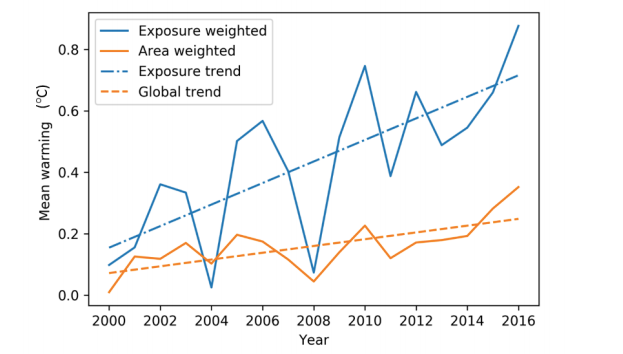Diagram - The number of supercentenarians, defined as individuals who live to at least the age of 110, has steadily increased over the course of the last 50 years. Estimates for the total number of supercentenarians worldwide vary, but even the most generous estimates place the global population of supercentenarians at less than 1000.
Supercentenarians are highly rare, but fascinating and remarkable individuals. In the United States, supercentenarians, members of the population who are aged 110 and older, account for roughly one in every five million people. While healthy lifestyles may play an important role in supercentenarians' longevity, scientists have long suspected genetic factors are also crucial to their long lasting lifespans.
The New York Times documented one man's prodigious journey around the world to collect, store, and analyze blood samples from supercentenarians, in search of a common genetic link among them all. James Clement, a self-proclaimed "citizen-scientist," is an entrepreneur, the founder of Androcyte LLC, a crowdsourced biotechnology company that develops methods for early detection of age-related diseases, and co-founder of Veritas Genetics, another biotechnology company that develops new methods for sequencing the human genome at lower costs Clement's quest to meet and obtain samples from supercentenarians was advised by Harvard geneticist Dr. George Church, whose research interests have previously focused upon searching for ways to reverse the aging process. As the price to sequence full human genomes has fallen steadily throughout the early 21st century, Clement was able to secure a sufficient amount of capital to finance the sequencing of 15 supercentenarians' complete genomes; Dr. Church's lab assisted in the analysis of these samples. While roughly 2,500 differences in the nucleotide sequences between supercentenarians and control groups were found, the small sample size prevented any confirmation of their statistical significance. These differences between supercentenarians and the rest of the population have been attributed to the lack of normal polymorphisms that result in increased risk for cancer, heart disease, or other ailments that often afflict people as they age.
Finding willing supercentenarian participants was a significant challenge in Clement's quest. At least one of the supercentenarians Clement contacted had declined to provide a donation because she had already given blood samples to another university. While people can be incorrigible at any stage of life, a very elderly person born before the dawn of biotechnology could understandably be irked by persistent requests for blood samples. Modern news and media outlets are heavily tailored to younger people, and scientists must find ways to effectively communicate their findings and goals to the older demographic, especially when their research concerns the topic of aging.
References:
Androcyte LLC
New York Times article:
Veritas genetics









